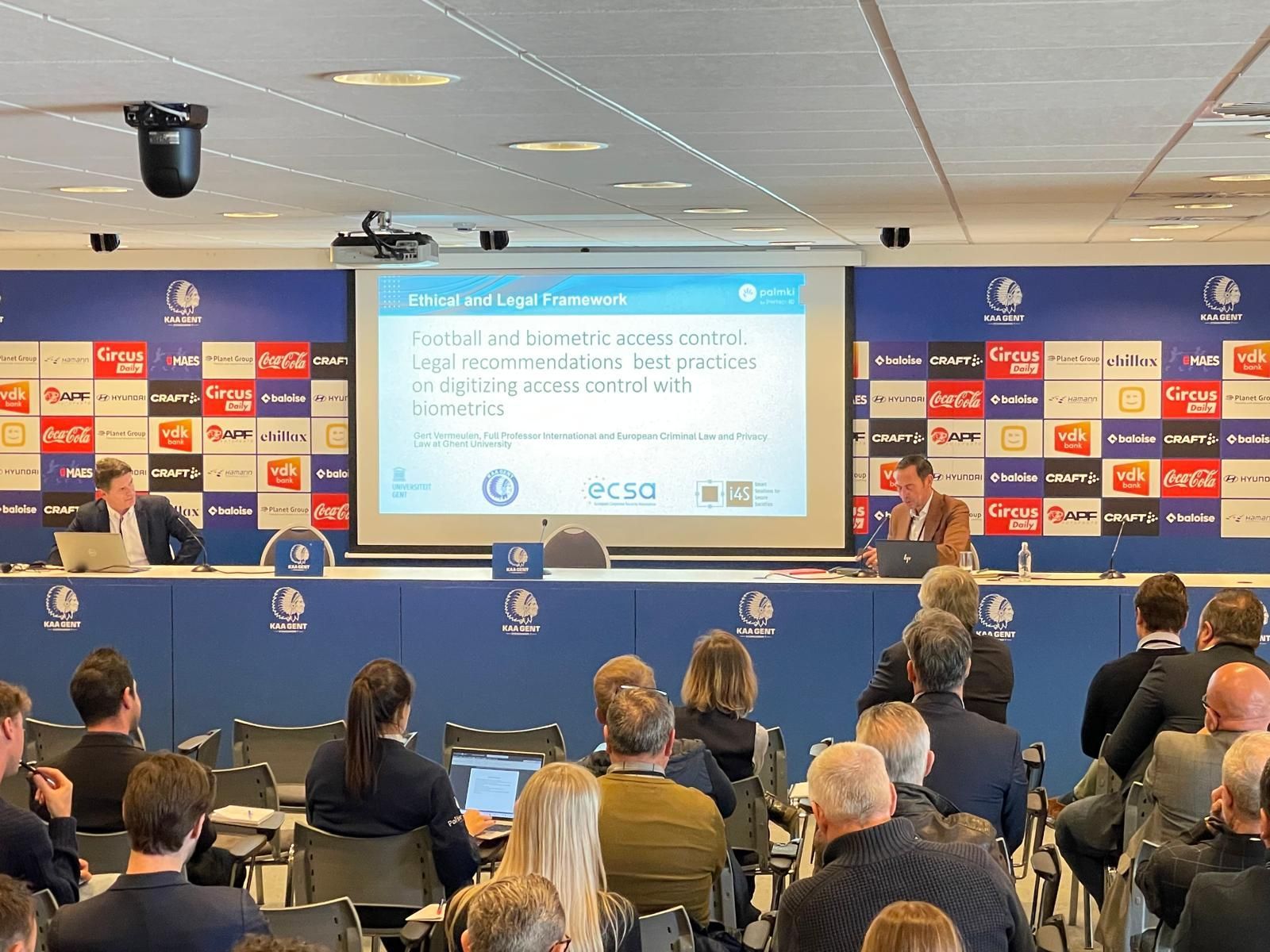
UGent was proud to take part in a seminar on biometric access control in football stadiums, hosted by KAA Gent in collaboration with Palmki, the European Corporate Security Association (ECSA), Capyx, and itsme®. This event brought together a range of experts to engage in a thought-provoking discussion on the future of stadium security.
Recent research by Gert Vermeulen, Julie Van Pée, and Arne Dormaels, funded by Interior Affairs, provided valuable insights and highlighted key guidelines for the use of biometric access control at football matches. Some of the essential points include:
Verification over Identification 🔐 Verification (1:1) presents fewer privacy risks than identification (1:n).
Control by the Individual 👤 Spectators should maintain control over their biometric data (e.g., through e-ID or supporter cards).
Data Retention Period 🗂 Biometric data should only be stored for as long as necessary for the current season.
Legal Basis ⚖️ Implementation must be grounded in a public interest, such as enforcing stadium bans.
Data Processing Responsibility ⚽ Football clubs should assume responsibility as data controllers, with clear agreements with suppliers.
Type of Biometrics 🔍 It’s important to select lower-risk biometric techniques and assess the risks of new technologies to avoid "function creep"—the shift of technology's purpose to unintended uses.
During the panel debate, experts underscored the importance of these guidelines, stressing their critical role in balancing security with privacy concerns when implementing biometric technologies at sports events.